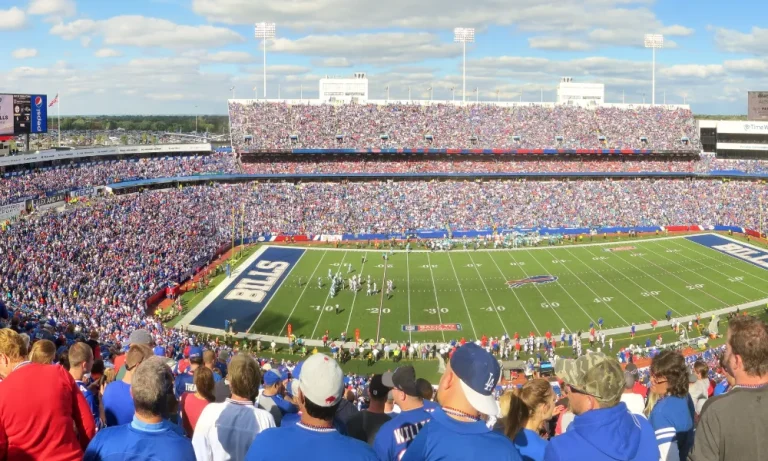How much do NBA players run in a single game?
NBA player does this during those intense basketball games. Well, let me tell you, I was amazed when I discovered the incredible distances these athletes cover on the court. From my own experience as a basketball enthusiast, it’s mind-boggling to imagine the sheer amount of running involved.
Importance of Physical Fitness in Basketball
Basketball is a game that demands not only skill and strategy but also exceptional physical fitness. As someone who has played basketball myself, I can vouch for the fact that endurance and stamina are crucial for success on the court.
When it comes to basketball, running isn’t just about getting from one end of the court to another. It plays a significant role in maintaining peak performance throughout the game. Endurance allows players to keep up with the fast pace, stay focused, and make split-second decisions without losing steam.
Running not only helps improve cardiovascular health but also enhances muscular endurance. It strengthens leg muscles used for explosive jumps during rebounds or layups. Additionally, consistent running improves lung capacity, allowing players to take deep breaths during intense moments without feeling winded.
Factors Affecting Distance Covered by NBA Players
Have you ever wondered what factors contribute to the varying distances covered by NBA players during a single game? Well, let’s dive into the fascinating world of basketball dynamics and explore how different elements influence player movement on the court.
Position-specific requirements
In basketball, each position has specific roles and responsibilities. Guards are typically responsible for ball handling and initiating plays, while forwards focus on scoring and rebounding.
Centers often provide defense and dominate in the paint. Analyzing these positions allows us to understand which ones require more running based on offensive and defensive duties.
Playing style
Teams have varying styles of play—some prefer a fast pace, constantly pushing the ball up the court for quick shots, while others adopt a slower approach with deliberate half-court sets.
These playing styles directly impact the distance covered by players throughout a game. Additionally, individual playing styles also come into play; aggressive players may be more active in moving around compared to those with conservative tendencies.
Game situation
Certain game situations can significantly affect player movement. Blowout games or overtime periods may lead to increased intensity as teams try to secure victory or catch up from behind. In such scenarios, players often push themselves harder, covering more ground than usual.
Team strategies
The offensive and defensive strategies employed by teams also influence player movement patterns. Offensive schemes like transition offense involve quick bursts downcourt after gaining possession—a tactic that requires considerable running effort from all players involved.
On defense, tactics like full-court press or zone defense can impact how much ground players need to cover throughout a game. Statistical Analysis.
Average distances covered position per game
Based on available data from recent seasons, we can provide insights into the average distances covered by different positions. Guards, known for their agility and playmaking abilities, tend to cover significant ground throughout a game.
Forwards, with their versatile roles in scoring and rebounding, also put in considerable mileage. Centers often have less distance covered due to their focus on interior play and defensive positioning.
Comparisons with historical records
To truly understand how the game has evolved over time, comparing these averages with historical records is crucial. With changing gameplay trends and strategies implemented by teams, it’s essential to examine if there have been any notable changes in player movement patterns throughout history.
This comparison allows us to identify potential shifts in playing styles or coaching philosophies that may have impacted the distances covered by NBA players.
Notable Examples & Records

Ever wondered about the incredible feats achieved by NBA players when it comes to covering ground on the basketball court Let’s explore some notable examples and records that highlight the exceptional distances recorded during games.
Instances of exceptionally high distances
There have been instances where certain players showcased extraordinary endurance, covering extensive distances in a single game. Whether it’s relentless hustle or unmatched work ethic, these athletes pushed themselves to new limits.
By analyzing specific games and tracking player movements, we can identify those remarkable performances that left fans astounded.
Records for most miles/kilometers season or career
In addition to individual game performances, there are also records set for the most miles or kilometers run by NBA players within a single season or throughout their careers.
These records showcase not only an athlete’s physical prowess but also their consistency and dedication over time. It’s awe-inspiring to see how far some players have traveled on the court throughout their illustrious careers.
Frequently asked questions
1. What are some common conditioning drills used by professional basketball athletes?
Professional basketball athletes often incorporate drills such as suicides, shuttle runs, and interval sprints into their training routines. These exercises focus on improving cardiovascular endurance and simulating game-like situations.
2. How do these conditioning drills help increase stamina and endurance levels?
Conditioning drills challenge the body’s energy systems, pushing them to adapt and improve over time. By consistently engaging in these high-intensity workouts, players enhance their aerobic capacity, muscular endurance, and overall stamina required for prolonged periods of running during games.
3. Are there any specific exercises that target both stamina and strength-building simultaneously?
Yes! Exercises like burpees, box jumps, or circuit training incorporating weights can help develop both stamina and strength simultaneously. These compound movements require exertion of effort while maintaining a high level of intensity—resulting in improved endurance along with muscle development.
4. How frequently should I include conditioning drills in my training routine?
It is recommended to incorporate conditioning drills at least two to three times per week alongside regular practice sessions. Consistency is key when it comes to building endurance; gradually increasing intensity and duration will yield better results over time.
5. Are there any precautions or considerations I should keep in mind when performing these exercises?
While participating in conditioning drills, it is important to prioritize safety and listen to your body’s limits. Start with proper warm-up routines to prevent injuries and maintain good form throughout each exercise.
Conclusion
In conclusion, the amount of running NBA players do in a single game is truly astounding. From my own experience as a basketball enthusiast, I’ve witnessed the incredible distances these athletes cover on the court. It’s mind-boggling to imagine the sheer physicality and endurance required to keep up with the fast-paced nature of the game.




